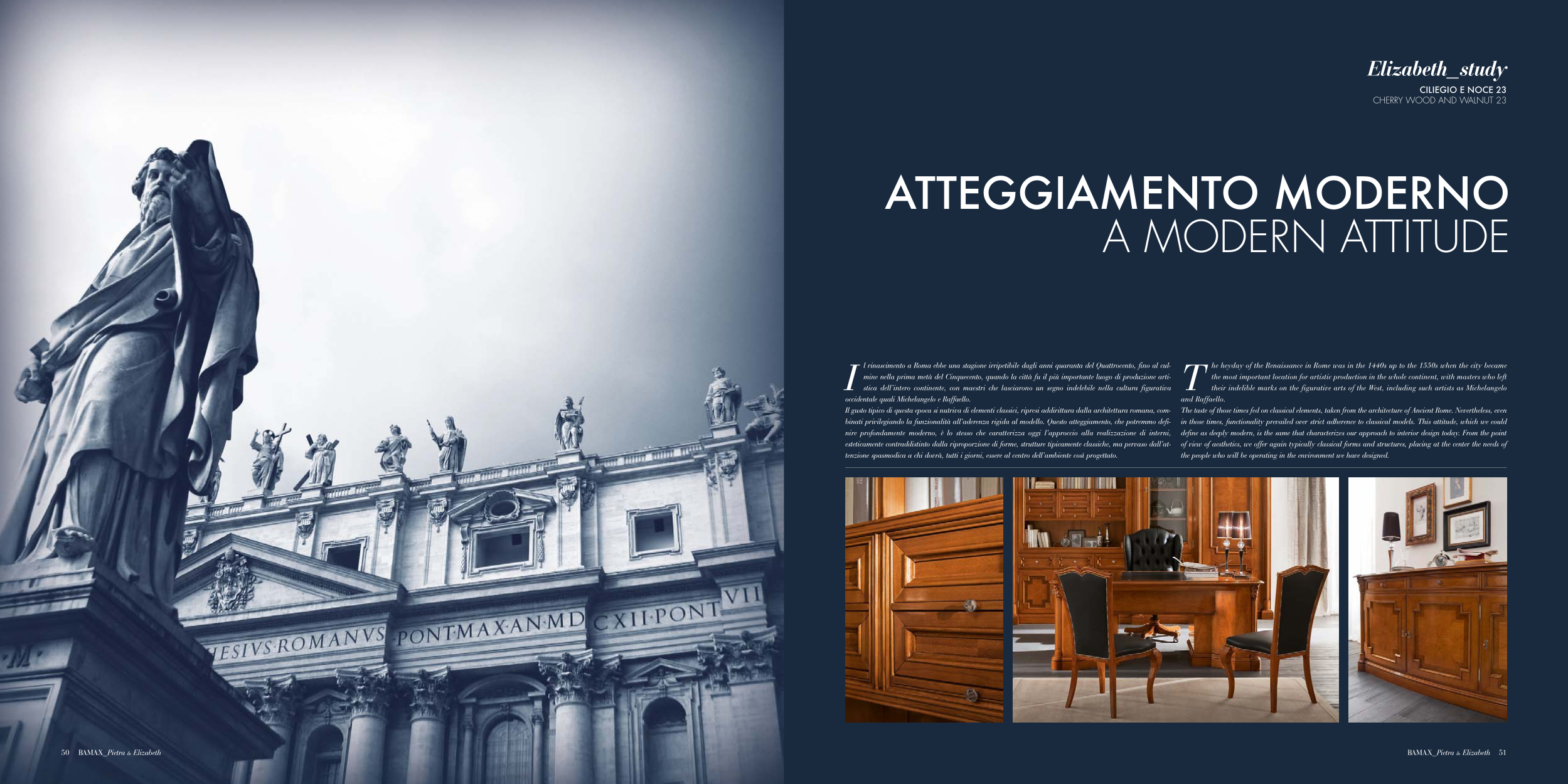50
BAMAX_Pietra & Elizabeth
Elizabeth_study
CILIEGIO E NOCE 23
CHERRY WOOD AND WALNUT 23
ATTEGGIAMENTO MODERNO
A MODERN ATTITUDE
I
l rinascimento a Roma ebbe una stagione irripetibile dagli anni quaranta del Quattrocento, fino al cul-
mine nella prima metà del Cinquecento, quando la città fu il più importante luogo di produzione arti-
stica dell’intero continente, con maestri che lasciarono un segno indelebile nella cultura figurativa
occidentale quali Michelangelo e Raffaello.
Il gusto tipico di questa epoca si nutriva di elementi classici, ripresi addirittura dalla architettura romana, com-
binati privilegiando la funzionalità all’aderenza rigida al modello. Questo atteggiamento, che potremmo defi-
nire profondamente moderno, è lo stesso che caratterizza oggi l’approccio alla realizzazione di interni,
esteticamente contraddistinto dalla riproporzione di forme, strutture tipicamente classiche, ma pervaso dall’at-
tenzione spasmodica a chi dovrà, tutti i giorni, essere al centro dell’ambiente così progettato.
T
he heyday of the Renaissance in Rome was in the 1440s up to the 1550s when the city became
the most important location for artistic production in the whole continent, with masters who left
their indelible marks on the figurative arts of the West, including such artists as Michelangelo
and Raffaello.
The taste of those times fed on classical elements, taken from the architecture of Ancient Rome. Nevertheless, even
in those times, functionality prevailed over strict adherence to classical models. This attitude, which we could
define as deeply modern, is the same that characterizes our approach to interior design today. From the point
of view of aesthetics, we offer again typically classical forms and structures, placing at the center the needs of
the people who will be operating in the environment we have designed.
BAMAX_Pietra & Elizabeth
51


